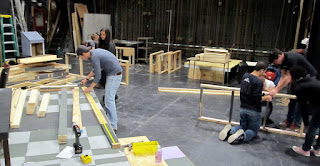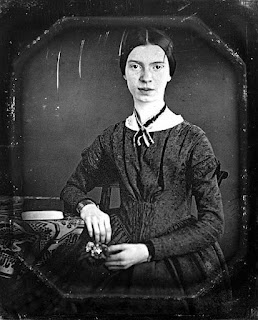Back in August I wrote about an upcoming play, Mauritius
by Theresa Rebeck, and that I was going to be working on and that I was
going to be the Philatelic Advisor.
For a play about stamps it offered a number of unusual challenges.
Stamp collecting is not a young person’s hobby and I was not
surprised that few of those working I play had any knowledge about stamps.
I met with both the actors and design team to educate then a
bit about the stamps mentioned in the play, the world of stamp collecting and
what a stamp shop might look like.
When I joined my local stamp club back in 1989 I was the
youngest member and now over twenty years later I still am.
The director did a good job researching the stamps that “Star”
in the play and gave that information to the actors, but I wanted to give the
actors a bit more.
I wanted those who were suppose to be stamp experts look
like they knew what they were doing.
I spent time with the actors giving them a basic history of
the stamps in the play and showing them examples of them.
I also introduced them
to the basics of stamp collecting and worked one-on-one with the actor who
played the stamp dealer to give him a little more instruction on how to handle
stamps.
The scene designer did a good job designing a stamp shop and
I provided many of the stamps and related material used to dress the set.
In addition the stamp shop there was a house set that sat
side-by-side to the stamp shop on the stage.
The house set extended over to the side stage area and the
designer fit the box door openings into the design.
My students worked hard and did a good job building the two large
and detailed sets.
Perhaps my biggest surprise on this production was just how
smoothly everything went.
I planned out the work schedule and it went well, we were
finished on time and I even got to go out for dinner on opening night; a feat that I rarely get to do.
There were a few mess ups, some the students fault, some
mine, but nothing too bad.
When we were painting the walls I found out that we forgot
to build one flat and another was the wrong size, but it did not take too long
to fix things and get things back on schedule.
The success that I have on each production is a result of
the mixture of the number of students that I have, their skill level and most
importantly their attitude.
If the students do not want to work on the play there is
very little I can do.
I have found that it is best if I am honest with the students,
I let them know what we are doing and why and try to mix up the fun work with the
shit work.
There is always a need to clean up the shop, stage and/or
the storage areas and moving heavy things from here to there.
If we need to move curtains and mop the floor for a music
concert and then move the curtains back the next day to get ready for the next
event I just let them know it has to be done and not make it seem I am
punishing them.
I always give the students as much credit as I can for it is
really them who build most of the sets.
Unlike when I worked on my first plays at Brockport when I
did much of the work myself, I quickly learned that the students need to do it
even if I could do it faster.
Once the students develop an ownership of a project they
work better and harder.
The best example of that is when we do any metal work.
When we did A Midsummer’s Night Dream a few
years ago I had a team of students who worked many extra hours outside of the
regular shop hours on welding the frames needed for the show.
To get the students excited about the special projects is
not too hard to do; the real trick is to
get them excited about the importance of the regular work.
A group of eight people came from my stamp club to see the
play and I gave them a tour of the stage after the show was over.
They were kind and said that they enjoyed the play; even though
they found the language a bit rough and were a bit shocked by the fight scenes.
Although the play had very rare stamps as part of the plot, it
was really greed and the money that the stamps could bring that drove the
action of the play.
 |
| Mauritius "Post Office" Stamps |
When I started my Blog I thought I was going to re-tell my
life from the earliest plays to the newest, but as I have done several times
already, stories of my current work just seem to come up and I want to share
them with you.
I want my readers to know what is keeping my busy when there
is a gap in my Blog postings.



































